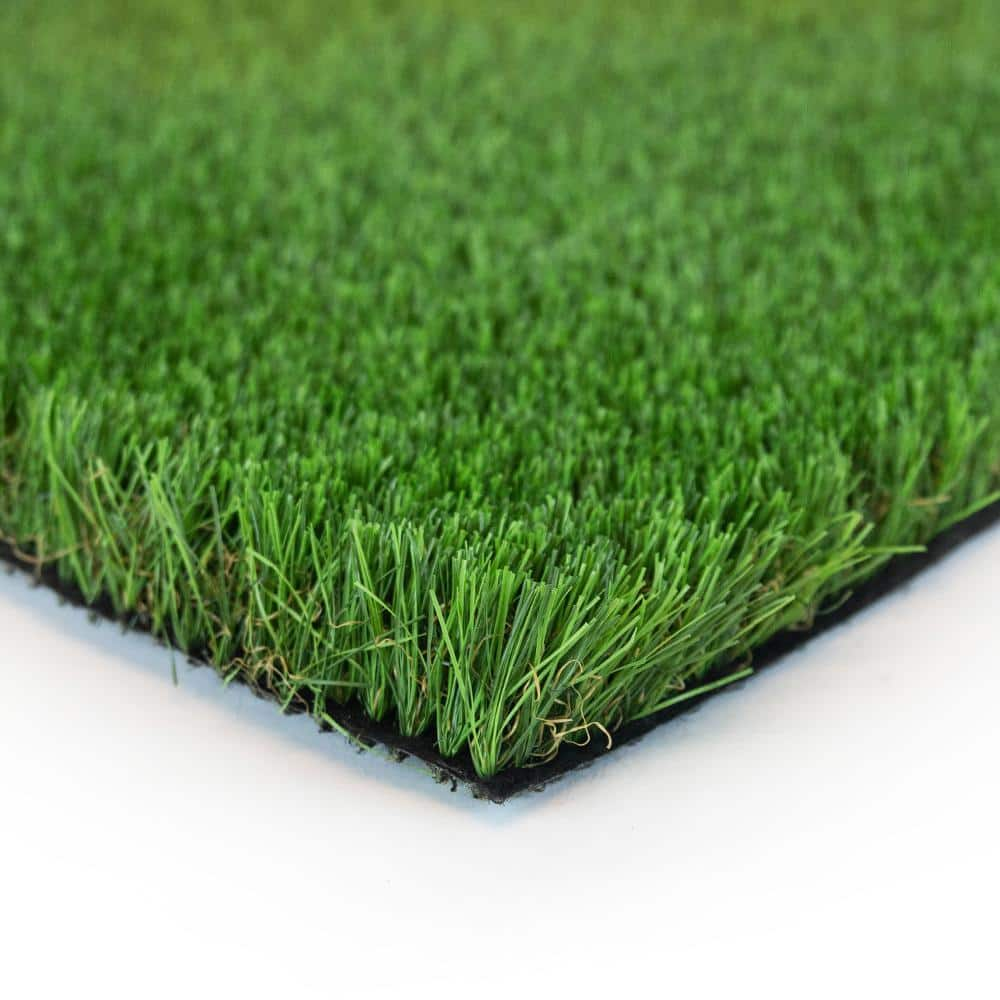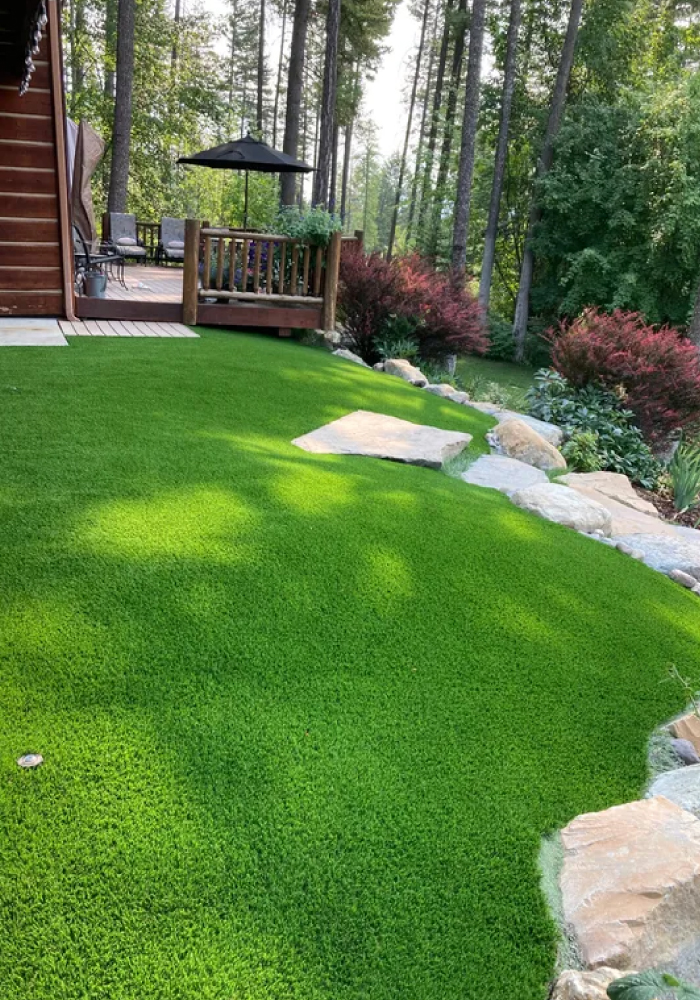Delve Into the Environmental Advantages of Opting for Artificial Lawn Solutions
The adoption of man-made turf options offers an engaging chance to deal with pressing ecological difficulties. By substantially decreasing water usage and reducing the application of unsafe chemicals, these options not just advertise lasting landscape design however also protect regional ecosystems.
Water Preservation Advantages
One of one of the most significant advantages of fabricated turf is its capability to conserve water. Standard lawn yards call for considerable watering, specifically in locations prone to drought or water constraints. On the other hand, synthetic grass does not require watering, dramatically minimizing the total demand for water sources. This feature is particularly useful in dry areas where water deficiency is a pressing issue.
By removing the demand for regular watering, artificial turf adds to lasting landscape techniques and assists reduce the ecological influence of excessive water consumption. The preservation of water expands to the decrease of runoff, which can lead to dirt disintegration and river air pollution.
Furthermore, the setup of synthetic turf enables homeowners and municipalities to assign water resources a lot more successfully, concentrating on necessary usages such as drinking water and farming. The change towards synthetic grass not only advertises responsible water usage but additionally aligns with wider environmental goals focused on maintaining natural deposits.
As neighborhoods increasingly focus on sustainability, the water preservation advantages of synthetic grass offer an engaging case for its fostering in business and domestic landscape design tasks.
Reduced Chemical Usage
The shift to synthetic grass significantly reduces the reliance on chemical therapies commonly used in all-natural turf maintenance. Conventional lawn monitoring usually involves the application of chemicals, herbicides, and plant foods to promote development and control pests. These chemicals can present dangers to human wellness, regional wildlife, and the atmosphere, adding to dirt and water contamination.
In contrast, synthetic lawn eliminates the need for these unsafe substances. By reducing the release of synthetic substances right into the ecosystem, synthetic lawn advertises healthier dirt and water systems.
Furthermore, the lack of chemical drainage connected with synthetic grass installations aids safeguard neighborhood waterways from contamination, sustaining marine life and maintaining biodiversity. Arizona turf. As neighborhoods increasingly prioritize sustainable practices, choosing for fabricated turf provides a sensible option that aligns with ecological conservation objectives. Through this shift, homeowner can enjoy rich eco-friendly spaces without endangering environmental health and wellness, paving the means for a more lasting future
Reduced Carbon Footprint

In addition, the setup of artificial turf can lead to significant water conservation. All-natural grass require significant quantities of water for irrigation, which not only adds to the carbon impact related to water extraction and treatment yet also stress neighborhood water sources. In contrast, man-made lawn needs very little upkeep, calling for no watering, thereby dramatically decreasing water use and its connected power costs.
In addition, the durability of synthetic grass adds to its decreased carbon effect. With a lifespan of approximately 15 years or more, the demand for frequent substitutes is diminished, causing less waste and reduced energy consumption in manufacturing and dealing with conventional turf options. In general, man-made grass provides a sustainable option for environmentally conscious landscape design.
Environment Conservation
Habitat preservation is a crucial factor to consider in the discussion over landscape design options, particularly when comparing man-made turf to natural yard. All-natural yard yards usually require substantial maintenance, consisting of using pesticides, herbicides, and fertilizers, which can negatively impact regional ecological communities. These chemicals can leach right into the soil and rivers, hurting indigenous plants and animals and interrupting local environments.
Synthetic grass eliminates the demand for harmful chemicals, thus securing neighboring wild animals and preserving the integrity of bordering ecological communities. The installment of synthetic lawn can lead to the conversion of former grass locations into more biodiverse landscapes, such as pollinator gardens or indigenous plant areas, which can sustain local wild animals.
Ultimately, the shift to synthetic grass not only conserves water and minimizes maintenance initiatives however likewise cultivates an extra harmonious relationship in between human tasks and the native environment, promoting habitat conservation while doing so.
Long-Term Sustainability
Long-term sustainability is a crucial consider reviewing the benefits of synthetic grass over conventional turf yards. Among the most considerable benefits of artificial grass is its durability; it can last up to 15-20 years with minimal maintenance, whereas natural lawn calls for frequent reseeding and substitute. This longevity minimizes the requirement for constant resources, such as water, fertilizers, and pesticides, which are essential for maintaining a healthy and balanced grass lawn.
Additionally, important site man-made lawn adds to a reduction in carbon discharges associated with lawn care devices. Traditional yards often require gas-powered mowers, leaners, and blowers, all of which contribute to air contamination. Artificial turf companies phoenix. On the other hand, man-made turf gets rid of the requirement for such tools, promoting a cleaner environment
Additionally, the manufacturing of synthetic grass increasingly utilizes recycled products, improving its sustainability profile. As makers take on green methods, the environmental click here now impact of synthetic grass proceeds to diminish.

Conclusion
The adoption of synthetic grass remedies presents significant environmental benefits, consisting of considerable water preservation, minimized reliance on unsafe chemicals, and a reduced carbon footprint. Man-made lawn help in protecting natural environments by decreasing land disruption and promoting long-term sustainability via the usage of resilient materials. Collectively, these variables highlight the potential of synthetic lawn to add positively to ecological wellness and use a feasible alternative to traditional landscaping techniques in a significantly resource-conscious globe.
In comparison, man-made grass does not require watering, substantially minimizing the total need for water resources. By decreasing the release of artificial substances into the ecosystem, fabricated turf promotes much healthier dirt and water systems.
In addition, the installment of fabricated grass can result in considerable water preservation. In comparison, man-made grass requires marginal maintenance, requiring no watering, consequently dramatically lowering view website water use and its associated energy prices.

Comments on “Upgrade Your Outdoor Space with Arizona Artificial Turf for a Evergreen Green Look”